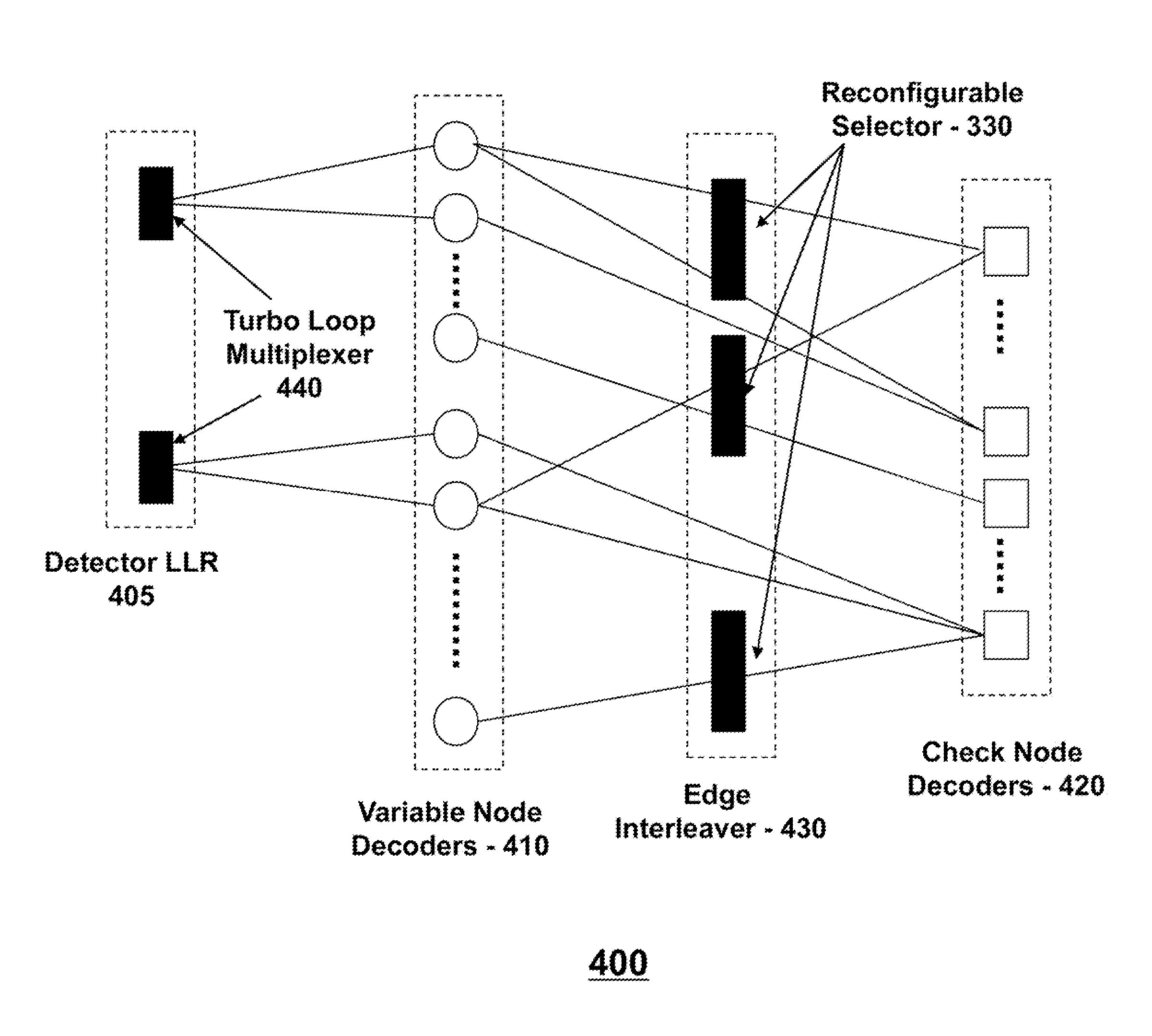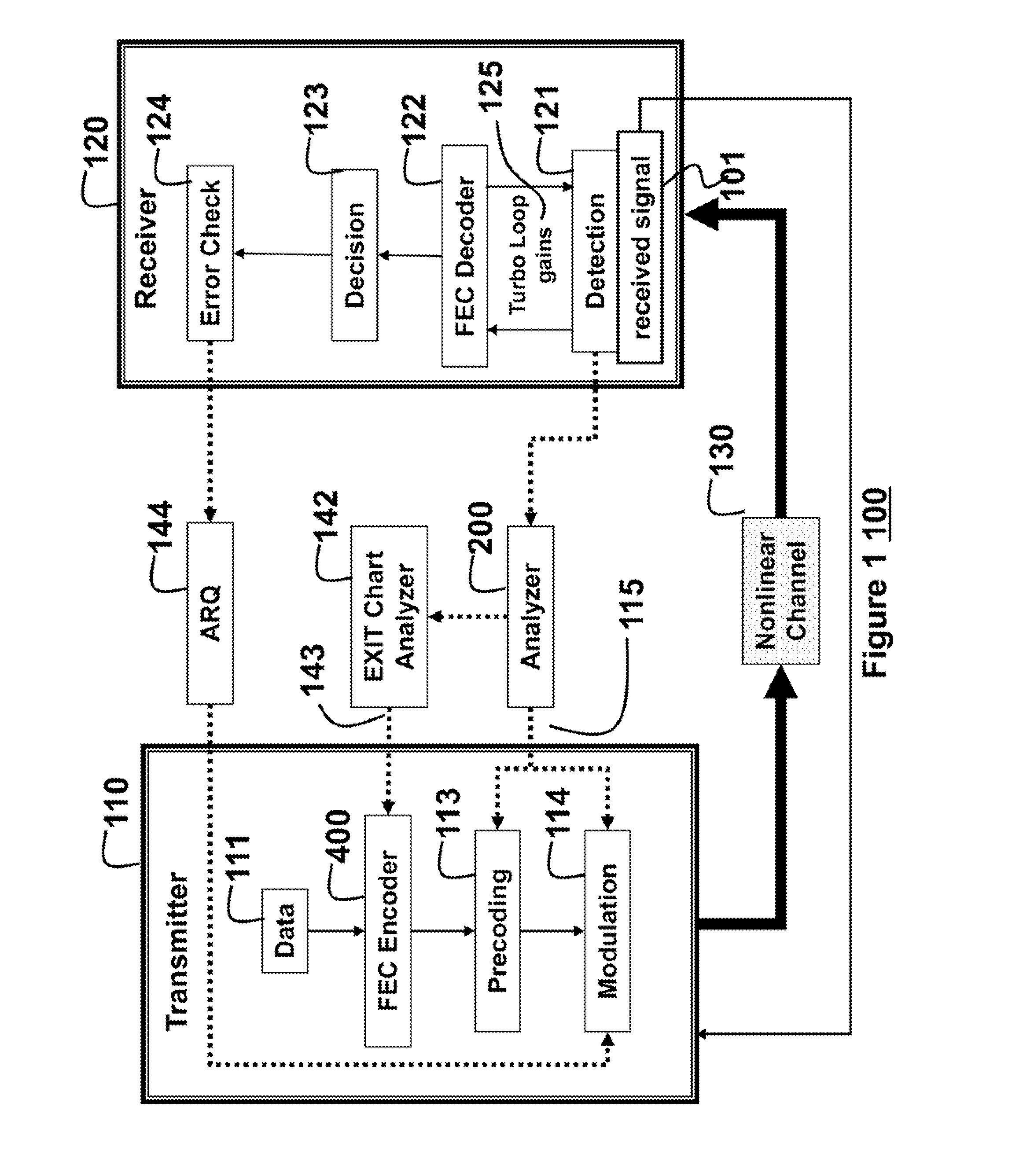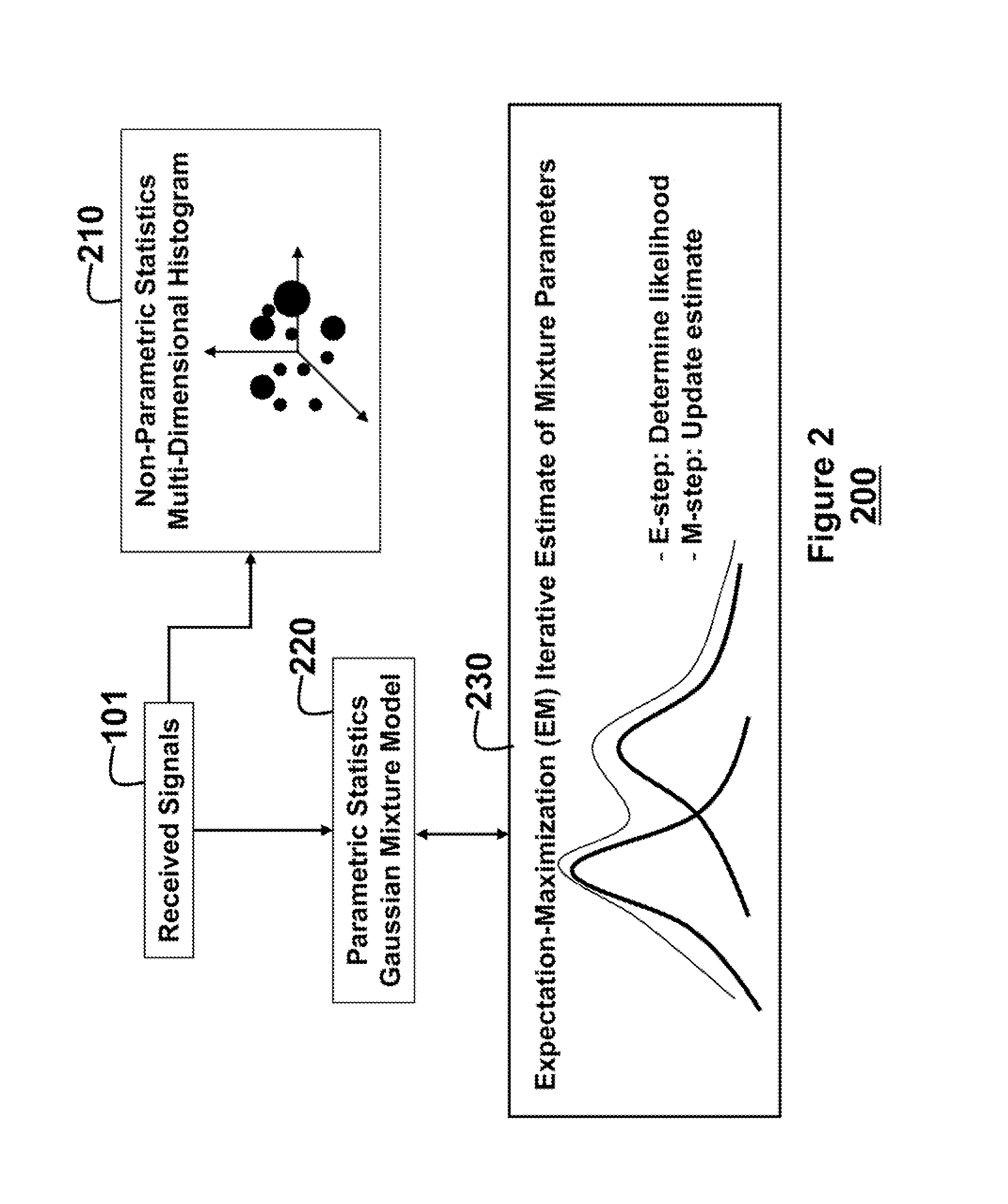Adaptively Coding and Modulating Signals Transmitted Via Nonlinear Channels
a nonlinear channel and adaptive coding technology, applied in the field of digital communication, can solve the problems of limited fec coding advantage, complex interaction between light signal and medium, and no existing adaptive coding method can adjust for nonlinear channels, so as to reduce distortion and reduce the effect of reducing the equivalent nonlinear distortion
- Summary
- Abstract
- Description
- Claims
- Application Information
AI Technical Summary
Benefits of technology
Problems solved by technology
Method used
Image
Examples
Embodiment Construction
[0019]Embodiments of the invention provide adaptive coding for linear and nonlinear channels to improve reliability and efficiency in digital communications networks.
Method and Network
[0020]FIG. 1 shows a preferred embodiment of a method and network 100 according to embodiments of the invention. The network includes a transmitter 110 and a receiver 120 to transfer data 111 via linear, nonlinear, and noisy channels 130 in e.g., optical fiber, satellite, and other types of noisy communication networks.
[0021]The transmitter has data 111 for an FEC encoder 400. The encoded data can be adapted by a precoding block 113, and are transmitted after modulation 114 as a signal, e.g., an optical or radio signal, via a linear, nonlinear or noisy channel 130.
[0022]A distorted received signal 101 is detected 121 at the receiver 120, e.g., by an equalizer. The detected signal is FEC decoded 122 to reduce errors. The FEC decoded information can be fed back to the detector block to achieve turbo loop...
PUM
 Login to View More
Login to View More Abstract
Description
Claims
Application Information
 Login to View More
Login to View More - R&D
- Intellectual Property
- Life Sciences
- Materials
- Tech Scout
- Unparalleled Data Quality
- Higher Quality Content
- 60% Fewer Hallucinations
Browse by: Latest US Patents, China's latest patents, Technical Efficacy Thesaurus, Application Domain, Technology Topic, Popular Technical Reports.
© 2025 PatSnap. All rights reserved.Legal|Privacy policy|Modern Slavery Act Transparency Statement|Sitemap|About US| Contact US: help@patsnap.com



